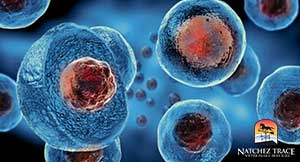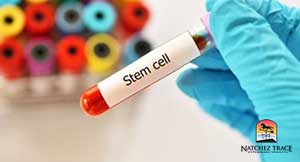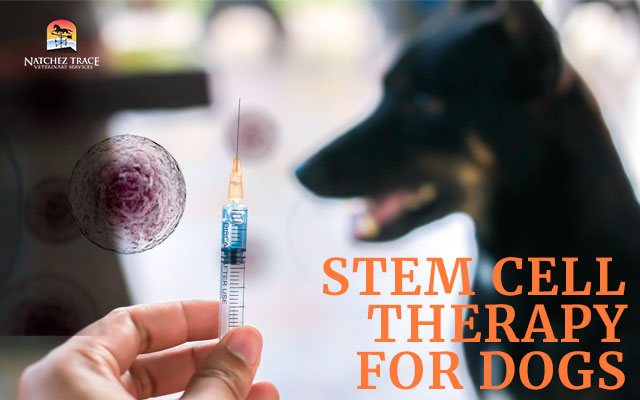In veterinary care, a groundbreaking frontier emerges, poised to redefine the landscape of canine health—the revolutionary realm of Stem Cell Therapy for Dogs. This cutting-edge treatment transcends traditional approaches, offering a beacon of hope for our beloved canine companions grappling with a myriad of health challenges.
Watch this clip of Dr. Marc Smith performing stem cell therapy:
Within these pages lies an exploration into the intricate world of stem cell therapy for dogs, shedding light on its mechanisms, applications, and potential to carve a new path in veterinary care. Join us in unraveling the transformative prowess of stem cell therapy—a beacon of hope in the quest for enhancing the well-being of our cherished canine companions.
Understanding Stem Cell Therapy for Dogs
Understanding stem cell therapy for dogs involves grasping the fundamental concepts of stem cells and their application in veterinary medicine:
- Stem Cells Basics: Stem cells are undifferentiated cells with the unique ability to develop into specialized cell types. In veterinary medicine, these cells are harvested from the dog’s own body (autologous) or donor sources (allogeneic) for therapeutic purposes.
- Regenerative Potential: Stem cells possess remarkable regenerative properties. When introduced into damaged tissues or areas of injury, they can regenerate and repair the affected tissues, aiding in healing.
 Types of Stem Cells Used: In canine stem cell therapy, two primary types of stem cells are utilized—mesenchymal stem cells (MSCs) and adipose-derived stem cells (ASCs). These cells are commonly extracted from the dog’s bone marrow or adipose tissue.
Types of Stem Cells Used: In canine stem cell therapy, two primary types of stem cells are utilized—mesenchymal stem cells (MSCs) and adipose-derived stem cells (ASCs). These cells are commonly extracted from the dog’s bone marrow or adipose tissue.- Administration Methods: Stem cells can be administered to dogs through various methods, including direct injections into the affected areas (joints, tissues), intravenous injections, or topical applications, depending on the treated condition.
- Mechanism of Action: Upon administration, stem cells home in on the damaged or injured tissues, where they promote tissue repair, modulate inflammation, and encourage the growth of healthy cells, contributing to improved function and reduced discomfort.
- Role in Canine Health: Stem cell therapy for dogs primarily targets musculoskeletal issues such as osteoarthritis, joint injuries, and ligament damage. However, research also explores its potential for addressing other health concerns, including autoimmune disorders or certain organ-related conditions.
Understanding the fundamentals of stem cell therapy for dogs allows pet owners and veterinary professionals to appreciate its potential in promoting healing, alleviating pain, and enhancing the overall well-being of dogs grappling with various health challenges.
Techniques and Procedure
The techniques and procedures involved in stem cell therapy for dogs encompass a series of meticulous steps aimed at harnessing the regenerative potential of stem cells:
- Stem Cell Collection: Stem cells are typically obtained from the dog’s own body (autologous) or donor sources (allogeneic). The most common sources include bone marrow or adipose tissue. For autologous therapies, cells are harvested from the dog, while allogeneic treatments involve donor cells.
 Isolation and Cultivation: Once harvested, stem cells undergo isolation and cultivation in a laboratory setting. The cells are processed to concentrate and purify the stem cell population, ensuring a higher concentration of potent regenerative cells.
Isolation and Cultivation: Once harvested, stem cells undergo isolation and cultivation in a laboratory setting. The cells are processed to concentrate and purify the stem cell population, ensuring a higher concentration of potent regenerative cells.- Preparation for Administration: The concentrated stem cells are prepared for administration, sometimes combined with growth factors or other biological agents to enhance their therapeutic potential. The cells are readied for injection or application.
- Administration Methods: Stem cells can be delivered through various routes, including direct injections into specific target areas such as joints, tissues, or affected organs. Intravenous injections or topical applications are also utilized depending on the condition being treated.
- Guided by Imaging Techniques: In some cases, imaging techniques like ultrasound or fluoroscopy are employed during administration. These techniques assist in precisely guiding the injections to the intended locations, ensuring accuracy and efficacy.
- Post-Treatment Monitoring: Following stem cell administration, dogs are monitored for responses and progress. Regular follow-ups allow veterinarians to assess the dog’s condition, track improvements, and adjust treatment plans if necessary.
The techniques and procedures in stem cell therapy for dogs prioritize precision, isolation of potent stem cells, and their strategic administration to maximize therapeutic effects. The process is tailored to address specific conditions and aims to promote tissue regeneration, reduce inflammation, and facilitate healing for dogs grappling with various health issues.
Conditions Treated with Stem Cell Therapy
Stem cell therapy for dogs holds promise in addressing various health conditions, primarily focusing on:
- Osteoarthritis: Stem cell therapy has shown significant potential in managing osteoarthritis, a common degenerative joint disease in dogs. By promoting tissue regeneration and modulating inflammation, it alleviates pain and improves joint function.
 Joint Injuries and Ligament Damage: Dogs experiencing joint or ligament damage, such as cruciate ligament injuries, may benefit from stem cell therapy. It aids in repairing damaged tissues, promoting healing, and potentially restoring stability to affected joints.
Joint Injuries and Ligament Damage: Dogs experiencing joint or ligament damage, such as cruciate ligament injuries, may benefit from stem cell therapy. It aids in repairing damaged tissues, promoting healing, and potentially restoring stability to affected joints.- Soft Tissue Injuries: Stem cell therapy has been explored for its efficacy in treating soft tissue injuries like muscle strains or tendon tears. It aims to enhance the healing process and improve the strength and integrity of damaged soft tissues.
- Degenerative Conditions: Certain degenerative conditions affecting dogs, such as degenerative myelopathy or intervertebral disc disease, are being researched for potential treatment with stem cell therapy. While still in the investigational stage, there’s interest in its regenerative potential for these conditions.
- Autoimmune Disorders: Stem cell therapy’s immunomodulatory effects have spurred interest in its application for certain autoimmune disorders in dogs. Research explores its potential in modulating the immune response and managing conditions like inflammatory bowel disease or immune-mediated polyarthritis.
- Other Health Issues: While primarily focused on musculoskeletal issues, ongoing research investigates stem cell therapy’s potential for addressing other health concerns, including certain organ-related diseases or neurological conditions.
Stem cell therapy shows promise as a versatile treatment option for a spectrum of health issues in dogs. Its regenerative properties aim to alleviate symptoms, promote healing, and potentially improve canine patients’ overall quality of life.
Benefits and Efficacy
Stem cell therapy for dogs offers several benefits, highlighting its efficacy in addressing various health concerns:
- Pain Relief: Stem cell therapy for dogs alleviates pain associated with musculoskeletal conditions like osteoarthritis or joint injuries. By reducing inflammation and promoting tissue regeneration, it mitigates discomfort, enhancing a dog’s quality of life.
 Improved Mobility: Dogs experiencing mobility issues due to joint problems or injuries may benefit from enhanced joint function and tissue repair facilitated by stem cell therapy. Improved mobility contributes to better movement and an active lifestyle.
Improved Mobility: Dogs experiencing mobility issues due to joint problems or injuries may benefit from enhanced joint function and tissue repair facilitated by stem cell therapy. Improved mobility contributes to better movement and an active lifestyle.- Tissue Regeneration: Stem cells possess regenerative properties, promoting the regeneration of damaged tissues. This regeneration aids in healing injured tissues, such as ligaments, tendons, or cartilage, leading to improved structural integrity.
- Reduced Inflammation: The therapy’s anti-inflammatory effects help mitigate chronic inflammation associated with arthritis. By modulating the inflammatory response, it contributes to reducing discomfort and improving joint function.
- Minimal Invasive Approach: Stem cell therapy for dogs is minimally invasive. In most cases, it utilizes the dog’s own cells (autologous therapy), thereby minimizing the risk of rejection or adverse reactions.
- Potential Long-Term Effects: Stem cell therapy’s regenerative nature may lead to long-term benefits by addressing the underlying causes of certain health issues. This approach aims to slow down disease progression and support sustained improvement.
While individual responses may vary, numerous clinical studies and anecdotal evidence suggest that stem cell therapy can offer tangible benefits in enhancing the well-being of dogs, particularly in managing musculoskeletal issues and supporting their overall health and mobility.
Considerations and Safety in Stem Cell Therapy
When considering stem cell therapy for dogs, several important considerations regarding safety should be taken into account:
- Experienced Practitioners: Seek treatment from qualified and experienced veterinary professionals specializing in stem cell therapy for dogs. Experienced practitioners ensure proper handling, processing, and administration of stem cells.
- Risk of Adverse Reactions:
 While generally safe, there’s a minimal risk of adverse reactions such as temporary swelling, soreness, or infection at the injection site. Close monitoring post-treatment helps identify and manage any potential reactions.
While generally safe, there’s a minimal risk of adverse reactions such as temporary swelling, soreness, or infection at the injection site. Close monitoring post-treatment helps identify and manage any potential reactions. - Individual Suitability: Not all dogs may be suitable candidates for stem cell therapy. Factors like the dog’s overall health, specific health conditions, or certain medications may influence the suitability of this treatment.
- Treatment Protocol: Ensure adherence to proper treatment protocols, including the collection, processing, and administration of stem cells. Correct handling and dosage are critical for safety and effectiveness.
- Possible Lack of Standardization: Stem cell therapies may vary in terms of protocols and standards between providers. Opt for facilities adhering to stringent quality control measures and validated protocols.
- Long-Term Effects and Monitoring: While the therapy aims for long-term benefits, ongoing monitoring, and follow-ups are essential to assess the dog’s response, track improvements, and adjust treatment plans if necessary.
- Potential Limitations: Stem cell therapy for dogs might not guarantee a cure for specific conditions and may have limitations in addressing advanced or severe health issues.
Understanding these considerations helps pet owners make informed decisions regarding stem cell therapy’s safety, efficacy, and suitability for their dog’s specific health condition. Consultation with a veterinarian specializing in this field is crucial for assessing whether this treatment aligns with the dog’s needs and health status.
Integrating Stem Cell Therapy with Veterinary Care
Integrating stem cell therapy for dogs with conventional veterinary care is essential for comprehensive canine health management:
- Collaborative Approach: Encourage collaboration between stem cell therapy providers and conventional veterinarians. A cohesive team ensures comprehensive care, combining expertise from both fields for the dog’s benefit.
- Medical History and Evaluation: Veterinary practitioners play a crucial role in evaluating the dog’s overall health, diagnosing conditions, and determining the suitability of stem cell therapy as part of the treatment plan.
 Diagnostic Support: Utilize diagnostic tools available in veterinary practices to assess the dog’s condition accurately. Imaging techniques like X-rays aid in identifying specific areas that could benefit from stem cell therapy.
Diagnostic Support: Utilize diagnostic tools available in veterinary practices to assess the dog’s condition accurately. Imaging techniques like X-rays aid in identifying specific areas that could benefit from stem cell therapy.- Complementary Therapies: Combine stem cell therapy with other complementary treatments, such as physical therapy, pain management, or prescribed medications, to optimize the overall therapeutic approach for the dog’s well-being.
- Follow-Up Care: Collaborate closely with post-stem cell treatment to monitor the dog’s progress. Veterinary follow-ups assess improvements, address concerns, and determine any necessary adjustments to the treatment plan.
- Educating Pet Owners: Educate pet owners about integrating stem cell therapy for dogs with veterinary care. Information about the therapy’s role, potential benefits, and the importance of ongoing veterinary support ensures comprehensive understanding and compliance.
Integrating stem cell therapy for dogs within the broader spectrum of veterinary care establishes a collaborative and multidisciplinary approach, ensuring holistic support and optimized health outcomes for dogs undergoing this innovative treatment.
Advancing Canine Health with Stem Cell Therapy
Advancements in veterinary medicine continue to shape a brighter future for canine health, with stem cell therapy for dogs standing as a beacon of progress:
- Revolutionizing Canine Care: Stem cell therapy represents a pioneering approach, harnessing the regenerative potential of a dog’s own cells to address various health issues. This transformative therapy marks a significant stride in advancing canine health care.
- Tailored Treatment Solutions: The individualized nature of stem cell therapy allows for tailored treatment plans, addressing specific health concerns such as arthritis, joint injuries, or soft tissue damage, offering hope where conventional treatments may fall short.
 Promoting Healing from Within: Stem cell therapy’s regenerative properties promote healing from within the dog’s body, fostering tissue repair, reducing inflammation, and potentially offering long-term relief from chronic conditions.
Promoting Healing from Within: Stem cell therapy’s regenerative properties promote healing from within the dog’s body, fostering tissue repair, reducing inflammation, and potentially offering long-term relief from chronic conditions.- Enhancing Quality of Life: Stem cell therapy enhances a dog’s overall quality of life by alleviating pain, improving mobility, and supporting tissue regeneration, enabling them to lead more active and comfortable lives.
- Continual Evolution and Research: Ongoing research and advancements in stem cell therapy aim to expand its applications, explore its potential in addressing a broader range of health issues, and ensure a continual evolution in canine health care.
- Collaborative Care Paradigm: Integrating stem cell therapy for dogs with conventional veterinary care sets a precedent for collaborative and holistic approaches, offering comprehensive support and optimal outcomes for canine patients.
Stem cell therapy’s emergence signifies a transformative shift in approaching and managing canine health issues. As research and expertise evolve, this innovative therapy continues to pave the way for new possibilities, offering renewed hope and improved well-being for our beloved canine companions.
Conclusion: Pioneering Canine Health with Stem Cell Therapy
 In the dynamic landscape of veterinary medicine, the advent of stem cell therapy for dogs stands as a beacon of hope, promising transformative possibilities in canine health care. This groundbreaking approach harnesses the regenerative power of stem cells, offering a new realm of treatment options for our loyal companions facing various health challenges.
In the dynamic landscape of veterinary medicine, the advent of stem cell therapy for dogs stands as a beacon of hope, promising transformative possibilities in canine health care. This groundbreaking approach harnesses the regenerative power of stem cells, offering a new realm of treatment options for our loyal companions facing various health challenges.
As this innovative therapy continues to evolve, fueled by ongoing research and advancements, its impact on advancing canine health remains profound. Stem cell therapy represents not just a treatment but a beacon of progress, offering renewed hope and improved quality of life for our cherished canine companions.
With a commitment to continued research, collaboration, and a dedication to the well-being of our dogs, stem cell therapy for dogs marks a promising stride towards a brighter and healthier future for the four-legged members of our families.
To reap stem cell therapy’s maximum benefits, consult our vet now.
People Also Ask:
- Is stem cell therapy safe for dogs?
- Answer: Stem cell therapy for dogs is considered safe when performed by qualified veterinary professionals. While adverse reactions are rare, some temporary swelling or soreness at the injection site might occur. A thorough evaluation helps determine a dog’s suitability for this treatment.
- How effective is stem cell therapy in treating arthritis in dogs?
- Answer: Stem cell therapy has shown promising results in managing arthritis in dogs. It aims to alleviate pain, reduce inflammation, and potentially regenerate damaged tissues. While individual responses vary, many dogs experience improved mobility and comfort post-treatment.
- What conditions can stem cell therapy address in dogs?
- Answer: Stem cell therapy for dogs is primarily utilized for musculoskeletal issues like arthritis, joint injuries, ligament damage, and soft tissue injuries. Ongoing research explores its potential for autoimmune disorders, neurological conditions, and certain degenerative diseases in dogs.







